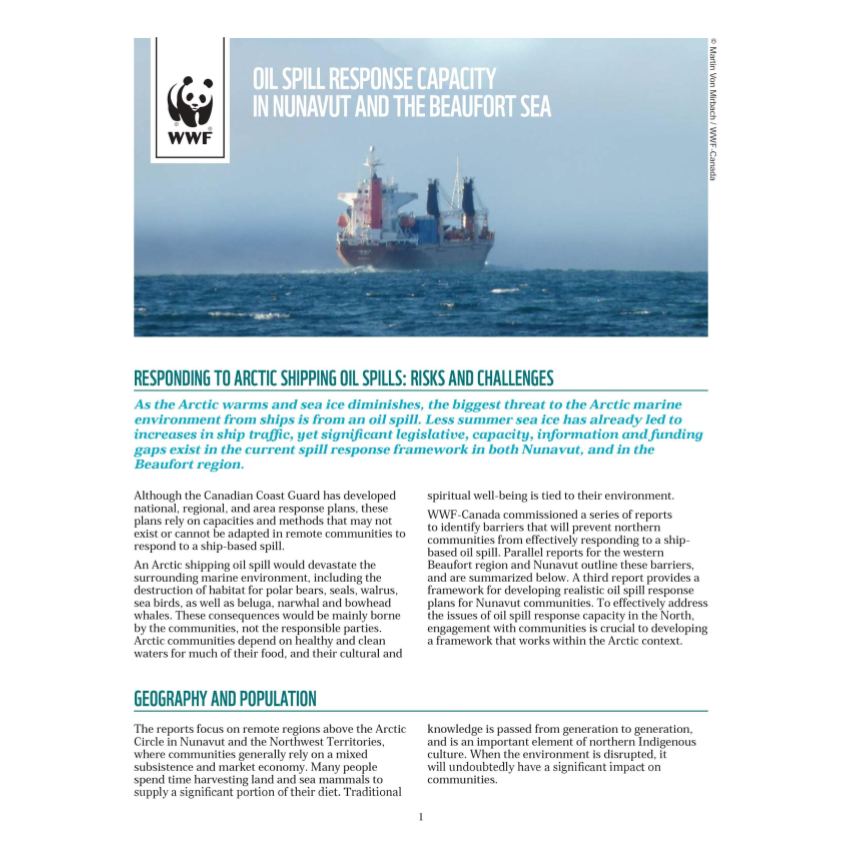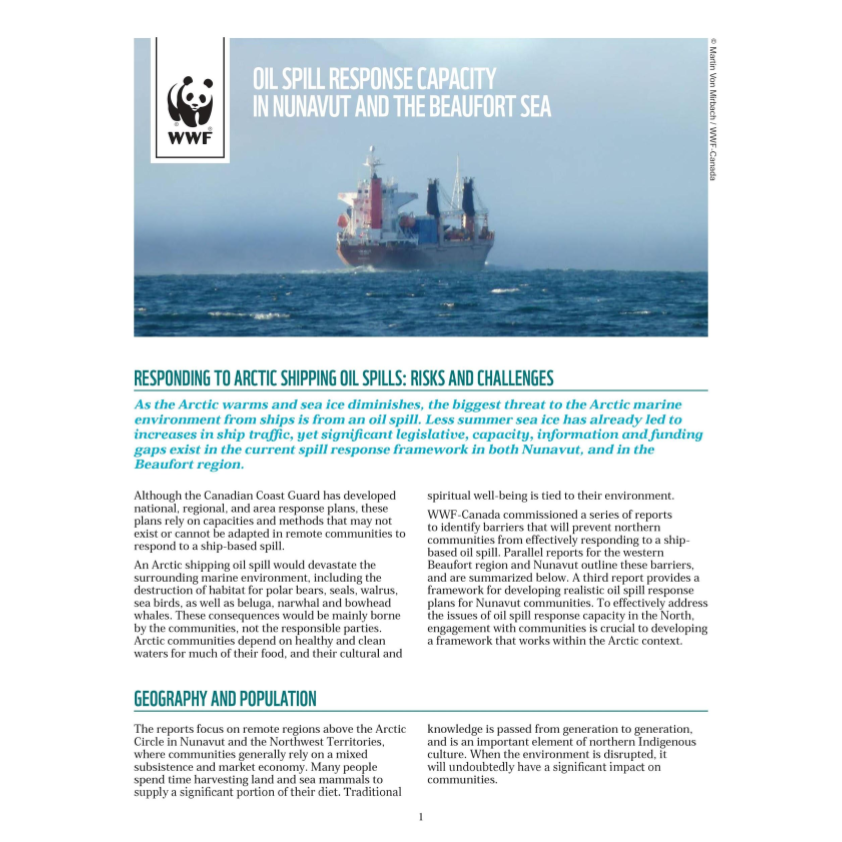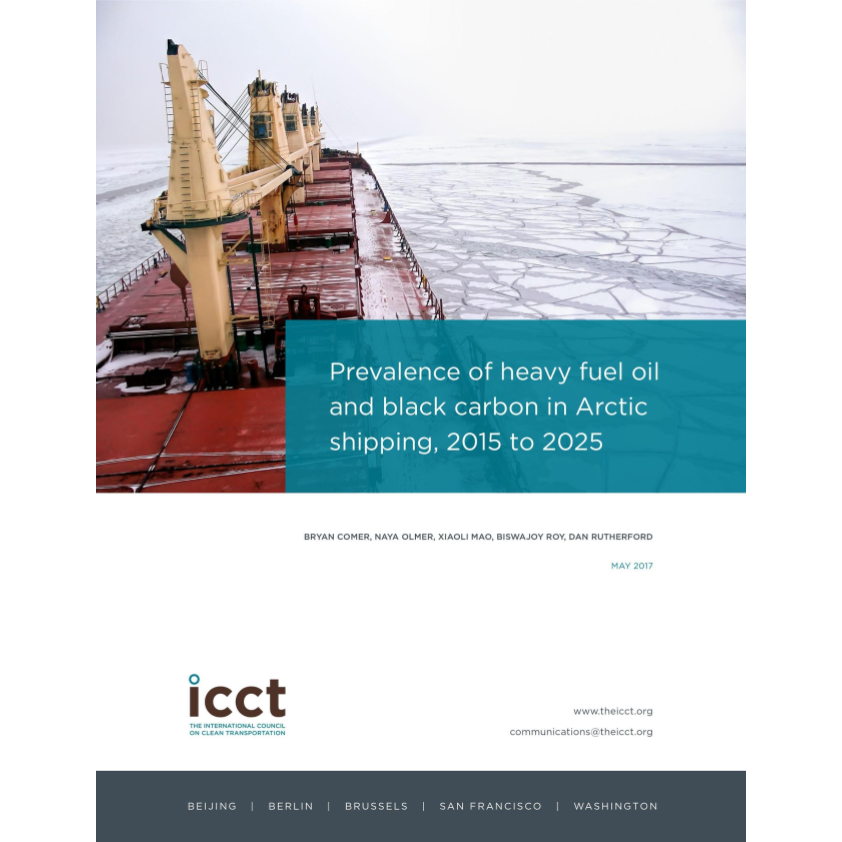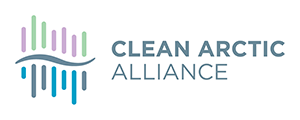Oil Spill Response Capacity in Nunavut and the Beaufort Sea

A Summary report by WWF Canada
As the Arctic warms and sea ice diminishes, the biggest threat to the Arctic marine
environment from ships is from an oil spill. Less summer sea ice has already led to
increases in ship traffic, yet significant legislative, capacity, information and funding
gaps exist in the current spill response framework in both Nunavut, and in the
Beaufort region.
Oil Spill Response Capacity in Nunavut and the Beaufort Sea

The reports focus on remote regions above the Arctic Circle in Nunavut and the Northwest Territories, where communities generally rely on a mixed subsistence and market economy. Many people spend time harvesting land and sea mammals to supply a significant portion of their diet. Traditional knowledge is passed from generation to generation, and is an important element of northern Indigenous culture. When the environment is disrupted, it will undoubtedly have a significant impact on communities.
Prevalence of heavy fuel oil and black carbon in Arctic shipping, 2015 to 2025

Estimates heavy fuel oil (HFO) use, HFO carriage, the use and carriage of other fuels, BC emissions, and emissions of other air and climate pollutants in the Arctic for the year 2015, with projections to 2020 and 2025.
Prevalence of heavy fuel oil and black carbon in Arctic shipping, 2015 to 2025

A Study by Bryan Comer, Naya Olmer, Xiaoli Mao, Biswajoy Roy, Dan Rutherford
Estimates heavy fuel oil (HFO) use, HFO carriage, the use and carriage of other fuels, BC emissions, and emissions of other air and climate pollutants in the Arctic for the year 2015, with projections to 2020 and 2025.

